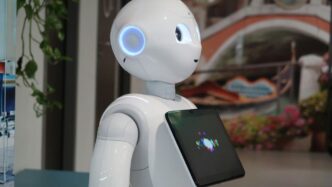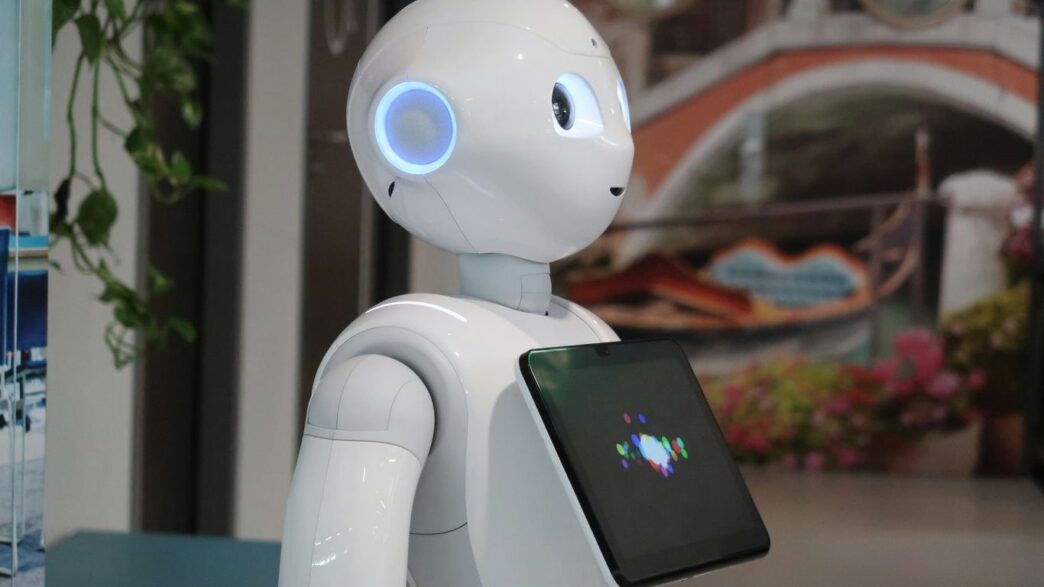AI gadgets have moved from science fiction to our everyday lives. By 2025, these smart devices are everywhere, making things easier for us at home, at work, and even when we’re just out and about. Think about smart assistants that know what you need, wearables that keep an eye on your health, or cars that drive themselves. AI is changing how we do things. Let’s look at some of the coolest AI gadgets that are making a big difference in 2025.
Key Takeaways
- Smart home devices powered by AI are predicting our needs, controlling our environment, and improving security.
- AI wearables are offering personalized health and fitness tracking, moving towards proactive wellness management.
- AI is making transportation safer and more efficient, from self-driving cars to smarter public transit systems.
- Entertainment systems are becoming more personalized, with AI curating content and adapting experiences.
- AI gadgets in education are creating adaptive learning tools that cater to individual student needs and learning styles.
1. Smart Home Devices
Smart homes in 2025 are way beyond just turning lights on with your voice. These AI-powered gadgets are starting to actually get us. Think about your smart assistant, like the latest versions of Alexa or Google Home. They’re not just waiting for commands anymore; they’re learning your habits. The system might notice you always turn the thermostat up around 7 PM and do it automatically. Or maybe it learns your preferred lighting for movie nights and sets it without you asking. It’s pretty wild how they can predict what you might want next.
Security systems have also gotten a major upgrade. Instead of just beeping at every squirrel, AI can now recognize faces. It can tell if it’s just you coming home or if there’s someone unfamiliar. This means fewer annoying false alarms and a better sense of who’s around your property. Plus, some systems can even detect unusual activity patterns and send you a heads-up on your phone.
Here’s a quick look at what’s common now:
- Personalized Comfort: AI adjusts lighting and temperature based on your presence and learned preferences.
- Proactive Maintenance: Smart appliances can alert you to potential issues or when supplies are low.
- Enhanced Security: Facial recognition and activity pattern analysis provide smarter home protection.
- Automated Routines: Devices work together to perform multi-step tasks, like preparing your morning coffee and adjusting the news feed.
It’s like having a little helper that’s always looking out for you, making the house run a bit smoother every day.
2. AI Wearables for Health and Fitness
It feels like just yesterday we were strapping on basic pedometers, and now, in 2025, AI-powered wearables are seriously changing the game for our health and fitness. These aren’t just fancy step counters anymore. They’re like having a personal health detective on your wrist, constantly watching your body’s signals.
Think about it: these gadgets are crunching numbers on everything from your heart rate variability and how well you slept to your blood oxygen levels and how much you’re actually moving. The AI inside uses all this data to spot little trends or odd bits that might mean something’s up, sometimes even before you feel it. This means you could get a heads-up about things like irregular heartbeats or changes that might point to diabetes, giving you a chance to talk to your doctor sooner rather than later.
But it’s not all about catching problems. These smart wearables are also getting really good at creating workout plans and diet tips that are just for you. They learn what you do, how you recover, and even how you’re feeling, then tweak your exercise intensity or food suggestions to keep you on track. It’s like having a coach who knows you inside and out.
Here’s a quick look at what makes them so smart:
- Predictive Health Alerts: The AI analyzes your data to flag potential health issues early.
- Personalized Fitness Plans: Workouts and activity goals adapt to your progress and recovery.
- Nutritional Guidance: Recommendations adjust based on your activity levels and health data.
- Sleep Quality Analysis: Detailed insights into your sleep patterns help improve rest.
- Stress Management Tools: Some devices offer guided breathing or mindfulness exercises based on detected stress levels.
The real magic happens when these devices can securely share this information with your doctor. This connection means healthcare providers get a clearer picture of your day-to-day health, not just what happens during a quick office visit. It helps them make better decisions about your care and can even mean less time spent in waiting rooms for routine check-ins. It’s a big step towards a more proactive way of staying healthy.
3. AI-Driven Transport

It’s not just about self-driving cars anymore, though those are definitely getting smarter. Think about how AI is changing the way things get from point A to point B. Delivery drones and robots are becoming a real thing, zipping around cities with packages, groceries, or your favorite takeout. They use fancy sensors and AI to figure out the best route, dodge pedestrians, and avoid unexpected stuff like a rogue squirrel or a sudden pothole. This means faster deliveries and less traffic for everyone.
Beyond just getting stuff to your door, AI is also making public transport work better. It helps figure out the most efficient routes for buses and trains, so they’re less likely to get stuck in jams. Plus, these AI systems are learning all the time. The more they operate, the better they get at avoiding problems and making sure your stuff arrives on time, or that your commute is smoother.
Here’s a quick look at what’s happening:
- Smarter Navigation: AI uses sensors like cameras and radar to see the world in real-time, helping vehicles navigate busy streets and tricky situations.
- Route Optimization: AI figures out the quickest and most fuel-efficient paths, cutting down on travel time and pollution.
- Obstacle Avoidance: From a stray dog to a construction zone, AI systems can react quickly to keep things safe.
- Environmental Perks: By using electric power and smarter routes, AI transport helps cut down on emissions and noise in our cities.
4. AI-Embedded Entertainment Systems
Remember when your TV just showed channels? Yeah, me neither. In 2025, entertainment systems are way smarter, thanks to AI. Think about your streaming services like Netflix or Spotify. They’ve been using AI for a while to guess what you might want to watch or listen to next, based on what you’ve liked before. It’s like having a personal curator for your downtime.
But it’s not just about suggestions anymore. We’re seeing AI get really creative. Some systems can now generate music that fits your mood, or even create dynamic video game experiences that change based on how you’re feeling in the moment. Imagine a game that gets more challenging if you’re bored, or calmer if you’re stressed. It’s pretty wild.
Here’s a quick look at what’s changing:
- Personalized Content Curation: AI analyzes your viewing and listening habits to recommend shows, movies, and music you’ll actually enjoy.
- Interactive Gaming: Games that adapt difficulty, storylines, or even visuals based on player input and emotional response.
- AI-Generated Media: Music, art, and even short video clips created by AI, tailored to specific tastes or moods.
- Smart Home Integration: Your entertainment system can now talk to your lights and thermostat, dimming the lights for movie night or adjusting the temperature automatically.
The biggest shift is how entertainment now feels like it’s truly made for you, not just something you happen to find. It’s moving beyond just playing content to actively participating in your relaxation and enjoyment.
5. AI in Education and Learning Gadgets

It’s pretty wild how much AI is changing how we learn things these days. Forget those dusty textbooks and one-size-fits-all lessons. By 2025, AI-powered gadgets are making education way more personal and, honestly, a lot more fun.
Think about smart tablets that actually figure out if you’re struggling with a math problem or breezing through history. They adjust the difficulty or the way the information is presented, just for you. It’s like having a tutor who knows exactly what you need, when you need it. This kind of adaptive learning means everyone can learn at their own speed, which is a big deal.
Here’s a look at what’s making waves:
- Language Learning Companions: These aren’t just apps anymore. We’re talking about devices that can have conversations with you, correct your pronunciation on the fly, and even create practice scenarios that feel like you’re actually in another country. They give you instant feedback, helping you get over those tricky grammar bits or awkward phrasing much faster.
- Coding and STEM Explorers: For kids (and adults!) interested in tech, AI toys are turning coding and science into games. They present challenges that get harder as you get better, teaching logic and problem-solving without feeling like homework. It’s all about building those thinking skills through play.
- Personalized Study Assistants: Beyond just flashcards, these gadgets can quiz you on subjects, identify your weak spots, and then serve up extra practice or different explanations until you get it. This tailored approach is making learning more effective and inclusive for all sorts of learners.
It’s not just about kids, either. Adults are using these tools to pick up new skills for work or just for fun. The ability for these gadgets to adapt means they’re useful whether you’re a total beginner or looking to master something complex. It really feels like learning is becoming something you can do anywhere, anytime, in a way that actually works for you.
Wrapping It Up
So, there you have it. The gadgets we’ve talked about aren’t just fancy tech toys anymore; they’re becoming a normal part of how we live, work, and even relax. It’s pretty wild how much AI is changing things, making our days smoother and, honestly, a bit easier. It feels like we’re just scratching the surface, and what’s coming next is bound to be even more interesting. It’s a good time to be paying attention to this stuff, whether you’re just curious or looking to upgrade your own tech game.














